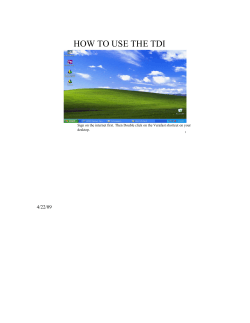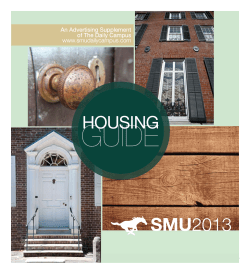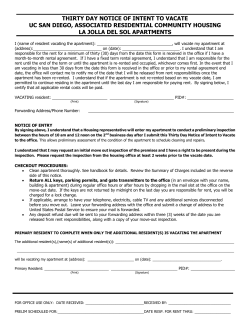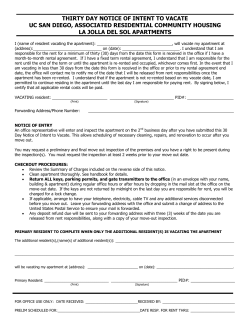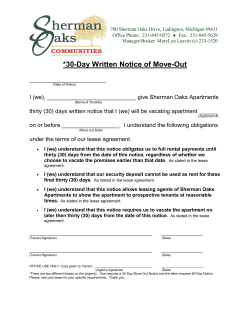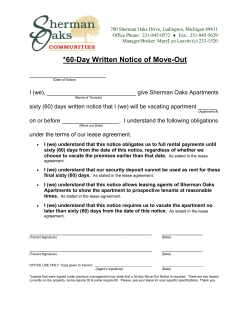
What is a housing association? apartment. (2013)
Sweden: Frequently asked questions about purchasing and living in a tenant-owned apartment. (2013) What is a housing association? As the owner of a tenant-owned apartment, you are also a member of a housing association. A housing association is a type of legal entity or economic association. The association owns the real estate (the building or buildings). The purpose of the association is to grant its members the right to occupy and use apartments for an unlimited period of time. The association has a board of directors that represents the association and manages all its business during the year. The board is appointed by the association’s members at the annual meeting of members. Do I own my apartment? As the holder of a right to occupy and use your tenant-owned apartment, you do not literally “own” the apartment. The housing association owns the entire building, and thus, your apartment. However, you have the right to use the apartment as long as you want, provided that you fulfil your obligations toward the association. How is my annual fee used? You pay a fee each month to the association based on the total annual fee set by the board of directors. This fee covers your share of all common costs that the association has for the building. These expenses include, for example, interest expenses for loans, amortization payments for loans, operating costs, taxes, insurance, repairs and maintenance. What kind of insurance do I need? Your housing association has general insurance for the building, which covers, for example, damage to the building caused by leaks from the plumbing system, fire and burglary. You should obtain your own home insurance for your apartment. The policy should contain a supplementary section covering tenant-owned apartments. Please also observe that the deductible for personal property in your home insurance should also include the value of all individual options you want covered by the insurance. This property is not owned by the housing association – it is your personal property and you are responsible for insuring it. When can I sell my tenant-owned apartment? You can sell your tenant-owned apartment whenever you want at the price you and the buyer agree on. Tenant owned apartments are purchased and sold by written contract. For a sales contract to be valid, it must specify the buyer’s name, the price, the handover date and the apartment the purchase concerns. The contract must also be dated and signed by the seller and buyer. A copy of the contract must be submitted to the board of directors at the same time that you request termination of your membership and the buyer applies for membership in the housing association. If the buyer is not granted membership in the association, the sale becomes invalid and is not permitted. Am I allowed to sublet to someone else? In certain cases, the board of directors may grant permission to sublet your tenant-owned apartment; for example you may be working or studying in another town, city or country, or you may be doing your military service, which would temporarily prevent you from using your apartment. If the board does not approve the subletting of your apartment, you can appeal the board’s decision to the regional Rent Tribunal (Hyresnämnden). Remember that as the member of the association, you are always the one who is obligated to pay the monthly and annual fees. You are also responsible for ensuring that the subletting tenant obeys the rules and regulations of the association. Furthermore, you must also ensure that the subletting tenant waives his/her right to legal protection of the tenancy (besittningsskydd). Otherwise, it may be difficult for you to get your apartment back after the rental period expires. How am I taxed for my tenant-owned apartment? Your share of the association’s total assets is to be taken up in your income tax return and added to your personal wealth. Each year, the association informs you what your share is currently worth. This notification is given in advance of the upcoming income tax filing period. Who is responsible for repairs and maintenance? The main rule is this: as a member of the association, your are responsible for repairing and maintaining your apartment. The association is responsible for the plumbing, staircases, basement, building exterior, roof and similar facilities. It may be difficult to know exactly where you should draw the line between your obligations and the association’s obligations. Simply described, you can say that the owner of the tenant-owned apartment is responsible for the interior of the apartment and associated areas. What does the board do? After the annual meeting of the housing association, the board holds a statutory or inaugural meeting to decide who will be the chairman, secretary, etc. A form is completed with the names of the board members. This form is then sent to the Swedish Companies Registration Office (Bolagsverket) for registration. The board is responsible for the day-to-day business of the association. The board records the proceedings of its meetings in minutes. The minutes are not public. As a member, you can request the association’s auditors to read the board’s minutes and any other association documents on your behalf. Since the board is responsible for the association’s economy and finances, it also determines the size of the annual fee paid by members, usually once a year when the annual budget is prepared. Legislation, rules and regulations There are laws governing housing associations. The association also has it own rules and regulations which are registered with the Swedish Companies Registration Office (Bolagsverket). Each member of the housing association receives a copy of the rules and regulations when the contract for a tenant-owned apartment is signed for the first time. Who sits on the board? The registration certificate issued by the Swedish Companies Registration Office (Bolagsverket) specifies the members of the board. The board is elected by the members of the housing association at the annual meeting. Lists of members and apartments Each housing association is required to maintain a list of members and a list of apartments. The list of members is public, but not the list of apartments. The list of apartments provides information such as whether an apartment has been pledged as security. You have the right to receive an excerpt from this list; for example, to show the bank that you own of the tenant-owned apartment, or that the apartment has been pledged as security. Annual meeting of association members The annual meeting of the association is held each year before the end of June if the association has a full calendar year as its fiscal year. The meeting provides the opportunity for all members of the association to get together and review the association’s activities. At the meeting, the members also elect the board and auditor(s). Notification of the meeting is distributed to members not earlier than four weeks, but not later than two weeks, in advance of the meeting. Each member has one vote at the annual meeting. If several members jointly own a tenant-owned apartment, they only have one single collective vote to ex ercise. If you cannot attend the annual meeting, you can vote through an authorized proxy. The proxy must be a member of the association, your spouse, your live-in partner or a member of your family. No one with a power of attorney is allowed to vote for more than one person who is entitled to vote. Extraordinary meetings If required, the board may give notice of an extraordinary meeting of members when an item of business requires a quick decision. At the extraordinary meeting, a decision can only be made on the business specified in the notification of the extraordinary meeting. Minutes of the annual meeting Minutes are kept at the annual meeting of members. The minutes are to be verified and approved afterwards. Economic plan An economic plan for the housing association is filed with the Swedish Companies Registration Office (Bolagsverket). The plan contains a list of the apartments in the building and specifies the deposits (investment portion) for each apartment. The plan also specifies the estimated capital, operating expenses and taxes for the first few years, expenses associated with the association’s loans, etc. Pledging a tenant-owned apartment as security As the owner of a tenant-owned apartment, you may use your apartment as security for a loan. The association is to be notified if you have pledged your apartment as security. When the association has received notification of this, the pledging process is completed. The association must note in the list of apartments that the apartment is pledged as security. What are the costs and income of my association? You can find information about the costs and income of the association in the annual report, which is distributed to members at the annual meeting. Which assets and liabilities does the association have? You can also find information about the association’s available funds, and its assets and liabilities, in the annual report. Who manages the association? JM manages the association’s economic administration until two annual reports have been prepared after the association’s loans have been placed. The administration process includes notifying members about monthly fees, paying the association’s expenses, doing the bookkeeping and tax returns, submitting statements of earnings, deductions, etc. to the authorities, preparing proposals for the annual report, etc. During the guarantee period, JM is also responsible for the technical administration of the housing association. ……………. Source: www.jm.se/en/residential/residential/ JM is one of the leading developers of housing and residential areas in the Nordic region. Operations focus on new production of homes in attractive locations.
© Copyright 2025
